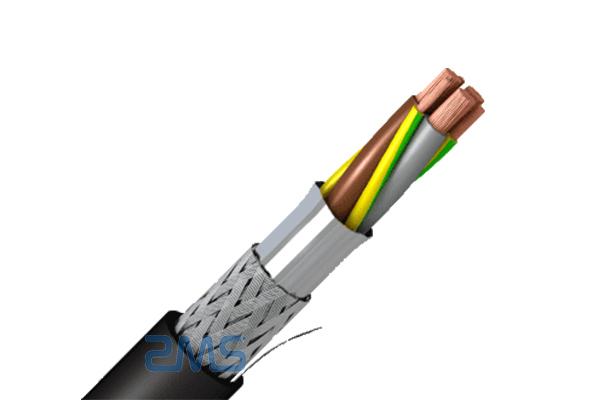Metal shielded control cables are an important measure to attenuate and prevent electrical interference. Including the total shielding of the core, sub-shield, and double-layer type total shielding. The choice of metal shielding type of control cable should be based on the strength of the possible impact of electrical interference, taking into account the comprehensive measures to suppress interference to meet the requirements of reducing interference and overvoltage. The higher the requirements for the anti-interference effect, the greater the corresponding investment. Should be used steel belt armor, steel wire braid total shielding, the price of the cable increased by about 10% ~ 20%.

Control interference in the strong circuit, due to its own signal being stronger, so in addition to the ultra-high voltage distribution devices located in parallel with the high-voltage cable immediately longer, are available without metal shielding control cable. Weak signal control circuit using the control cable, when located in the environment affected by interference, and does not have effective anti-interference measures, it is appropriate to use the control cable with metal shielding. This can prevent electrical interference can produce misoperation of low-level signal circuits or insulation breakdown and other effects. A weak circuit control cable if you can pull away enough distance from the power cable, or laid in the steel pipe, may make the external electrical interference reduced to the permissible limit.
For computer monitoring system signal circuit control cable, the principle of shielding type selection is (1) switching signals, available total shielding. (2) high-level analog signals, it is appropriate to use the total shield on the core, if necessary, also available on the core of the sub-shield. (3) Low-level analog signal or pulse signal, it is appropriate to use the sub-shield of the core, if necessary, also available with the sub-shield of the core of the composite total shield.
On the grounding of the shield, attention should be paid to the following points.
(1) the control cable shield of the analog signal circuit of the computer pro-control system, it is appropriate to use a centralized point of grounding. The reason is based on the requirements to ensure the normal operation of the computer monitoring system. Because even if only about 1V interference voltage, may also cause the fallacy of logic judgment, a centralized point of grounding can avoid grounding loop current.
(2) In addition to the computer monitoring system control cable shield only allows a concentrated point of grounding. In other control cable shields, when the electromagnetic induction interference is larger, it is appropriate to use two points of grounding. And when the interference of electrostatic induction is larger, a point of grounding.
(3) double shielding or composite total shielding of the inner shield layer is appropriate to use a point of grounding, while the outer shield layer can be two points of grounding.
(4) choose two points of grounding that should also be considered in the role of transient current, the shield layer will not be burned.
Along the high-voltage cable laid in parallel with the selection of control cables
The rated voltage of the control cable should not be lower than the working voltage of the circuit and should meet the requirements of the transient and frequency overvoltage that may be withstood. As the longer high-voltage cable lines generally use longitudinal differential protection mode, its protection and monitoring signals, such as control cables, are often laid in parallel with the high-voltage cable immediately adjacent (commonly known as the guide cable). When a single-phase ground fault occurs in the system, due to electromagnetic induction in the control cable frequency overvoltage value, often may exceed the commonly used control cable insulation level.
For example, the UK along 12 km of 275KV cable line next to the parallel laying of control cables, in a single-phase short-circuit current of the system 25KA, has measured its frequency induction overvoltage up to 21 ~ 25KV (steel belt armored control cable) or 12 ~ 15.5KV (lead-clad control cable). Therefore, the commonly used 5 KV or 15KV level control cable still can not adapt to the requirements of overvoltage. Another example is a city in China 3 km long 110KV cable line next to its parallel laying control cable, in a system short-circuit current 15KA, the role of the induced voltage, after calculating the need to choose the insulation level of not less than 10KV level control cable. At present, there are 15KV level guide cable products in China that have been used in the actual project. Measures to suppress induced overvoltage are (1) control cable spare core grounding. (2) power cable lead package grounded at both ends. (3) additional parallel grounding lines, etc.
